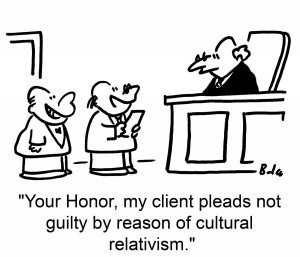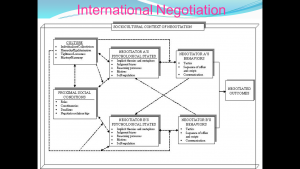One of Harvard Business Review’s most popular articles for 2015 was one authored by Erin Meyer, who wrote an interesting piece on the different styles people use when negotiating with a visual that went viral on Twitter. Her work resonates because our world is increasingly connected and, as much as technology helps us to connect faster, our brain cannot necessarily keep up when we deal with people across the world.
We understand that there are cultural differences and that we should be tolerant and understanding of this but internally we may get frustrated and struggle with the (well of course obviously but let’s not say it aloud) incompetent, wrong way that other party is handling the negotiation.
Meyer’s blog features an example of an interaction between a Saudi customer and an American negotiator. The argument here is that the American should’ve known better when he tried to close the deal – when negotiating with Saudis, you focus on the relationship, not the hard facts. But, isn’t trust important to all of us? And, secondly, what if that Saudi had studied in London and had picked up an aversion to direct communication because in Britain they prefer a more indirect communication style?
For decades scholars have worked on these challenges, from the famous ‘Getting to Yes’ by Fisher & Ury to the excellent work of Jeanne Brett summarised in now the 3rd edition of ‘Negotiating Globally’.
It helps to understand the ‘why’ behind people’s communication and negotiation styles. Culture, communication and conflict are a Bermuda triangle within which we can get easily caught. Meyer’s book is insightful, as does of course the work by Brett and, for example, the work of Gelfand and Dyer, which explains the complexity of how messages are sent and received in an intercultural negotiation context.  There are entire communities devoted to the issue of intercultural conflict and communication, from the practically oriented Dialogin to the training and education focused SIETAR (which has sites tailored to regions, here’s the EU version but there’s one for Australia, Japan, USA etc.) to the more academic International Association for Conflict Management (where you’ll see Brett, Gelfand and others in the ‘wild’). But there are so many more organisations that deal with this topic of understanding cultural differences during conflict management and negotiations.
There are entire communities devoted to the issue of intercultural conflict and communication, from the practically oriented Dialogin to the training and education focused SIETAR (which has sites tailored to regions, here’s the EU version but there’s one for Australia, Japan, USA etc.) to the more academic International Association for Conflict Management (where you’ll see Brett, Gelfand and others in the ‘wild’). But there are so many more organisations that deal with this topic of understanding cultural differences during conflict management and negotiations.
Once you’ve established the underlying drivers (e.g., Hofstede’s dimensions) and understand that when in Rome the Romans do things differently, there is still the challenge of how to behave. Brett, Gelfand and Meyer all have published widely on the subject in terms of advice, such as what strategies to adopt. If it doesn’t work out and coaching is required, there are a multitude of cross cultural management consultancies that can help.
The problem in the future (if it isn’t already the case) is that the learning of how they do it in Rome isn’t very useful if these Romans have studied in America and lived half their life in Thailand on an expat assignment. The next generation is mostly bi- or even tri-cultural. What’s more, the meetings conducted within the international arena will be attended by a diverse group of individuals. It will be impossible to learn the do’s and don’ts for each associate or colleague.
We may then be taught to adopt a strategy of ‘tolerance’ and simply accept that they are differences. But tolerance, ‘I tolerate you’, hints of a power imbalance and a tension that cannot be sustained for long. The key is to turn around the focus of attention away from the other and take perspective.
By developing our cultural intelligence, through taking a pause, suspending judgement, being mindful, asking questions and being able to put oneself in the other’s shoes, i.e., have empathy. It’s a recent concept, developed by P. Christopher Earley and Soon Ang and is like emotional intelligence but with the difference that EQ helps us in a room with people of similar background but CQ (or CI) helps us when we’re dealing with diversity. The key is to understand that no culture is ‘neutral’ or better than the other. Harry Triandis wrote about this in 2006 and since then, the field of cross cultural conflict management and intercultural negotiation has looked at this topic closely, for example in the Financial Times. The challenge within academia, however, is that there isn’t a reliable and quick measure for CQ/CI as, for now, it’s measured through self assessment. Perhaps whether someone has high CQ is a matter of asking how they’d solve dilemmas (see also Trompenaars) or observe them in group situations.
Managing with cultural intelligence takes time, something we seem to have less of in a world that is increasingly faster, facilitated by technology. When we recruit, merge, interact, negotiate and communicate, we need to suspend judgement and be aware with which lenses we’re viewing the world. What guiding principles guide our behaviour?
That means we cannot use culture as an excuse; we’ll need to go through a (sometimes literally) pain barrier to arrive at a solution that is mutually satisfactory. It’s cognitively tasking to be effective in a globalised environment but once you’ve gone over the perspective threshold, you might find yourself to be future fit.









